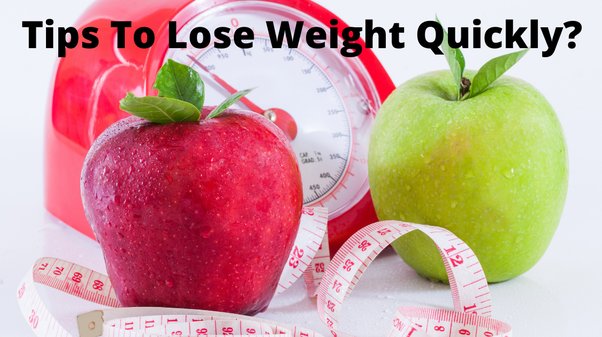
There are many factors that influence the nutritional quality of your children’s diet, including availability, influence and predictability. This article will examine each one. These tips will help you ensure your children eat a nutritious diet.
Predict
To predict a child’s eating habits, the researcher first needs to determine what factors influence that child's eating behaviour. SEP must be considered when implementing an intervention. It may prove difficult to include SEP because children from low and middle-income countries have different eating habits. These factors can help to predict a child's eating habits and make it possible to accurately predict their diet.
Accessibility
The availability of food resources and income for the household are key factors in determining a child's nutritional status. However, food availability does not always correlate with income. Children's diets are influenced by the financial support of their mothers. In certain cases, children's nutrition can be negatively affected by the availability of food in the home. It is therefore necessary to test more factors that impact the availability and nutrition of children's meals. Nevertheless, several interventions have shown promising results.

Influence
The influence of a child's diet on physical development was a topic of discussion in several studies. The present study examined how parents and teachers felt that their child’s diet affected their child’s physical development. We found that those with more income were more inclined to discuss the health benefits associated with healthy eating. Those with less income spoke more about their children's functional capacity and appearance.
Fathers
Growing evidence suggests that fathers' influence on children's diet and physical activity is important. While mothers play an important role during a child’s growth, fathers are more influential in shaping their children's physical and mental health. Focus group responses suggest that fathers play an essential role in shaping children's eating habits. Here are some tips to help fathers play an active part in their children's lives.
Educational level
Research has shown that children's dietary habits can be affected by their education. While there weren't significant differences in macronutrient intake or NMES among the different groups, it did affect dietary choices. Children who were raised in higher education households had more carotene or retinol than children of lower education homes. Higher education may play a role in healthy eating habits for children, according to these findings.
Access to healthy food
It is essential that children have access to healthy foods and nutritious diets in order to prevent and combat childhood obesity. Many families are not able to afford healthy foods. Food security is the availability of healthy foods at all times. According to the United States Department of Agriculture, 1 in 9 Americans lives in food insecurity. Nearly 11 million children are living in food insecure regions.

Adverse effects of restrictive feeding practices
Research on the adverse consequences of restrictive feeding practices for children has previously shown an association between child characteristics as well as food intake. These characteristics include approach, inhibitory control, BMI percentile and the RRV of the restricted food. However, the relationship between child characteristics and food intake is not clear. Because of this, the child's personality can have an impact on dietary response and behavior even though they are restricted in their food choices.
FAQ
Is it possible to eat fruits while intermittent fasting?
Fruits are great for you. They are rich in vitamins, minerals and fiber. However, they also contain sugar which can cause blood glucose levels to spike. This can cause insulin resistance and weight gain. When you are trying to lose weight on an IF diet, make sure you eat low glycemic fruit such as apples, pears or berries.
Is cardio a way to quickly lose weight?
Cardio exercises can be great for burning calories but not necessarily helping you lose weight. It all depends on how many calories you've stored and what type exercise you do.
If you're obese, cardio exercises might not be enough for you to shed those extra pounds.
It is important to combine them with exercise and diet.
You can lose weight by running or jogging. These exercises burn more calories than any other form of exercise.
You should train resistance to gain muscles, not fat. Resistance training involves using free weights, machines, bands, elastic bands, etc.
To lose weight fast, you need to combine cardio exercises with resistance training.
To lose weight fast, you need a combination of both cardio and resistance training.
What's the best exercise for busy people?
Exercise at home is the best method to stay fit. You don't have to join a gym or go to a fitness center to stay fit. You can do simple exercises at home without spending much money on equipment.
You just need to have a pair of dumbbells, a mat, a chair, and a timer.
The most important thing is ensuring you are consistent with your workouts. You could lose motivation if your workouts are not consistent for more than a few consecutive days.
Three times per week is a good way to begin. This could include squats, lunges, push-ups, pull-ups, dips, curls, etc.
Once you have mastered these fundamental movements, you can begin to learn other types, including running, jumping rope and skipping.
Make sure you choose the right exercise program for your needs. If you work long hours, you may want to avoid exercise programs that consume too much energy.
If you are a night owl, then you should consider exercising during the evening rather than early morning.
Listen to your body. Stop when you feel tired.
Statistics
- A 12-week study in 20 women with obesity found that walking for 50–70 minutes 3 times per week reduced body fat and waist circumference by an average of 1.5% and 1.1 inches (2.8 cm), respectively (healthline.com)
- According to Harvard Health, it's estimated that a 155-pound (70-kg) person burns roughly 112 calories per 30 minutes of weight training (5). (healthline.com)
- According to a study sponsored by the American Council on Exercise, a person weighing around 140 pounds (64 kg) would burn 108 calories at a 30-minute beginner's Pilates class or 168 calories at an advanced class of the same duration (26). (healthline.com)
- Among women, the increase in metabolic rate was nearly 4%, or 50 more calories per day (14Trusted Source (healthline.com)
External Links
How To
How to lose weight quickly
There are many options to lose weight quickly. But, many people find them ineffective and unsustainable. Fast weight loss is possible through diet and exercise. Your daily calories should be less than your daily intake. This means you should consume fewer calories each day than what your body burns during daily activities. If you want to lose weight fast, you must reduce your calorie intake.
Because they can increase your appetite, you should avoid eating foods with high amounts of sugar and fat. Drink plenty of water each day. It helps keep you hydrated and keeps your metabolism running at its peak. These three ingredients can be combined to produce faster results than you could ever imagine.